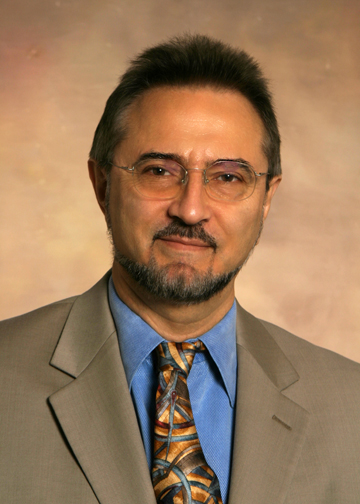Special High-Pressure Seminar -10am, January 20, 2023
Professor Valery I. Levitas of Iowa State University will present a talk titled, "New Rules of Coupled Severe Plastic Deformations, Phase Transformations, and Microstructure Evolution under High Pressure: In-situ Experiments and Four-scale Theory" on January 20, 2023 at 10am (Central time).
Please join us in person at the Advanced Photon Source of Argonne National Laboratory in the 446 Auditorium B102. We'll provide a hybrid option for those would like to join remotely.
Location (Hybrid):
Onsite: 446 Auditorium B102
OR
Join Microsoft Teams meeting
Click here to join the meeting
Meeting ID: 227 251 479 06
Passcode: xDvdcT
Download Teams | Join on the web
Or call in (audio only)
+1 630-556-7958,,254617989# United States, Big Rock
Phone Conference ID: 254 617 989#
Find a local number
Host:
Nenad Velisavljevic, HPCAT sector 16
[email protected]
[email protected]
Abstract:
During compression in a diamond anvil cell (DAC), materials undergo large plastic deformations, which cause the pressure growth and various phase transformations (PTs). We formulated a new concept that these PTs should be treated as plastic strain-induced PTs under high pressure rather than pressure-induced PTs. Pressure- and stress-induced PTs occur by nucleation at the pre-existing defects (e.g., dislocations) below the yield strength. Strain-induced PTs occur by nucleation at new defects permanently generated during plastic flow. Strain-induced PTs require completely different thermodynamic and kinetic treatments and experimental characterization.
The main problem in studying plasticity, plastic strain-induced PTs, and structural changes is that they depend on five components of the plastic strain tensor and its entire path, making a huge number of combinations of independent parameters. New in situ experimental results are obtained under compression of materials in a DAC and torsion in rotational DAC (RDAC), which the author brought to the USA in 1999 from his laboratory in Kyiv (Ukraine). Materials under study include carbon, Zr, BN, Fe, Si, and olivine. Drastic reductions (by one to two orders of magnitude) of the PT pressure compared with hydrostatic loading and the appearance of new phases are demonstrated. Thus, graphite in RDAC was transformed to nanocrystalline hexagonal and cubic diamond at 0.4 and 0.7 GPa, respectively, which are 50 and 100 times lower than the PT pressures under hydrostatic compression! This could be a precursor of new technology of plastic strain (defect) induced diamond synthesis and explains the appearance of microdiamonds in the severely sheared regions of the Earth's crust at low pressure and temperature.
It is found in situ that after severe straining of Zr, crystallite size and dislocation density of α- and ω-Zr are getting pressure-, plastic strain- and strain-path-independent, reach steady values before and after PT, and depend solely on the volume fraction of ω-Zr during PT. Immediately after completing PT, ω-Zr behaves like perfectly plastic, isotropic, and strain-path-independent. The minimum pressure for plastic strain-induced α-ω PT is also independent of plastic strain- and strain-path. Numerous phenomena with potential technological applications are revealed for a combined effect of plastic flow and particle size on PTs between 7 Si phases.
The four-scale theory for plastic strain-induced PTs is developed. Molecular dynamic and first-principle simulations were used to determine lattice instability conditions under all six components of the stress tensor. At the nanoscale and microscale, nucleation at various evolving dislocation configurations was studied utilizing developed nanoscale and scale-free phase-field approaches. The possibility of reducing PT pressure by more than an order of magnitude due to stress concentration at the shear-generated dislocation pileup is proven. At the microscale, a strain-controlled kinetic equation was derived, confirmed, and calibrated for Zr, and utilized in the large-strain macroscopic theory for coupled PTs and plasticity. At the macroscale, the behavior of the sample in DAC/RDAC is studied using the finite element approach. Various experimental effects are reproduced and predicted. The theory also resolves the main puzzles of the PT-based mechanism of the deep-focus earthquake. The obtained results create new opportunities in material design, synthesis, and processing of nanostructured materials by severe plastic deformations at low pressure.

